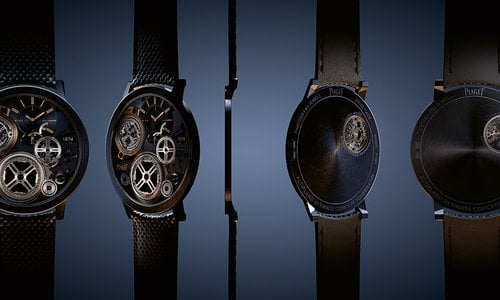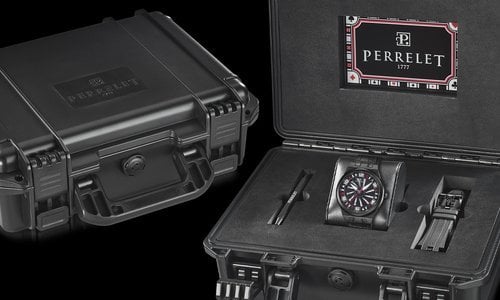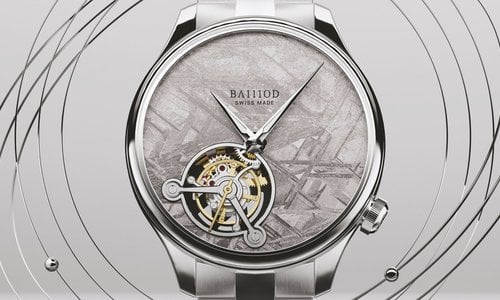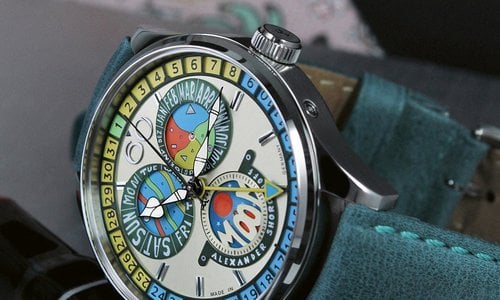For lovers of the most complex mechanical complications, Franck Muller, the Geneva-based company, has created a ‘world-first’ with its Aeternitas Collection.
Presented in four versions with a common basic Cintrée Curvex automatic movement measuring 33.8 mm between 3 – 9 o’clock, 40.8 mm between 12 – 6 o’clock with a width of 7.3 mm. In Version 1 the movement is equipped with a double barrel that guarantees an 8-day power reserve. It has a large tourbillon (Ø14 mm) with a balance wheel with adjustment screws in platinum and no index and the micro-rotor at 6 o’clock visible through the caseback. The initials FM for Franck Muller are on the upper bridge of the tourbillon. The Aeternitas Version 1-1 has the same indications plus a power reserve indicator at 12 o’clock.
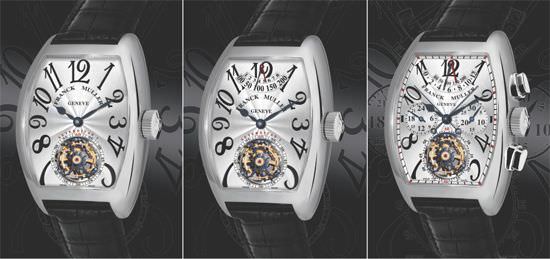
AETERNITAS VERSION I, AETERNITAS VERSION I-I and AETERNITAS VERSION III SPLIT SECONDS CHRONOGRAPH
From FM to eternity
Now this is where the story really begins.
The traditional perpetual calendar indicates the day, date, month and moon phases – in addition to the time of day, of course. It takes into account the length of each month (28 to 31 days) without the necessity of making a manual adjustment. The mechanism also takes into account the leap years but requires an adjustment three times in a row every 100 years because according to the Gregorian calendar, every 400 years, the leap year is cancelled for three centuries in a row and is re-established on the fourth century: in 2100, 2200, 2300 etc, the leap year is omitted, whereas in 2000, 2400, 2800 etc. it is re-established.
The Aeternitas Version II is therefore different to any other perpetual calendar since it takes into account the rule governing the Gregorian calendar that states all century years not divisible by 400 are common years and not leap years.
The Aeternitas eternal calendar is a module placed on the dial side of the watch and follows a 1000 year cycle thanks to two additional sets of wheels: the first set comprises a wheel of 10 years, the second a cycle of 100 years and a third that allows for the display of a 1000-year cycle; the second set of wheels is designed for the setting, through the use of cams, of the skipping of the leap years three time in a row every 100 years and its re-establishment the fourth time.
In addition to the usual indications – retrograde date at 12 o’clock, days, months, 24-hour day/night, normal leap year cycle – it also indicates the time equation which is coupled with the calendar, which means that if the watch is not wound for a number of years, at the moment of its correction, the equation of time continues to follow the calendar.
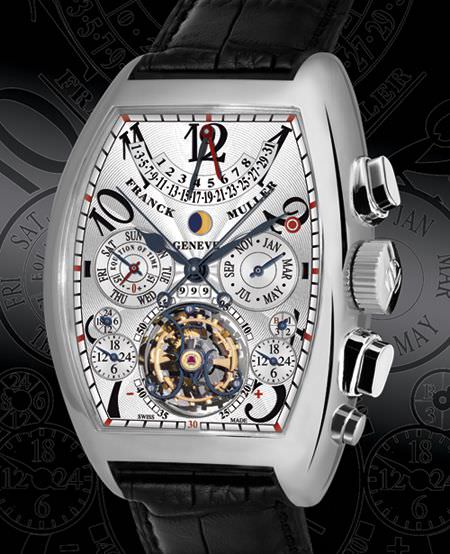
AETERNITAS VERSION II PERPETUAL CALENDAR
Two time zones utilizing a 24-hour hand are placed either side of the tourbillon at 5 and 7 o’clock and can be set by pushbuttons on the side of the case. The time zone indicator on the right is conceived for travelling eastwards and therefore moves one hour ahead at each press of the corrector on the right side of the case. The time zone indicator on the left is designed for travelling westwards and therefore moves back an hour with each press of the corrector on the left side of the case. Just above the tourbillon at 6 o’clock, is the year indicator which functions from 0 to 999 and then continues along its merry way indefinitely. Now that’s a world-first.
There is a moon phase indicator set just below the date indicator at 12 o’clock that works to a precision of 6.8 seconds per lunar month. That represents an error of a mere 24 hours every 1000 years. Traditional perpetual calendars make that error every 4 years.
Version III of the Aeternitas incorporates a Split-seconds Chronograph in the movement beside the tourbillon. This mechanism has three column wheels, an instantaneous 30-minute counter, a 12-hour counter at 12 o’clock and a 24-hour time zone at 9 o’clock. The watch also has a transparent caseback.
Version III of the Aeternitas combines the basic movement with a Split Seconds Chronograph.
So now you have it, the Aeternitas will run without correction from now to eternity. But you don’t have to take my word for it, check it out for yourself, say in a thousand years … around 3006 A.D ... or should that be 3006 F.M?

